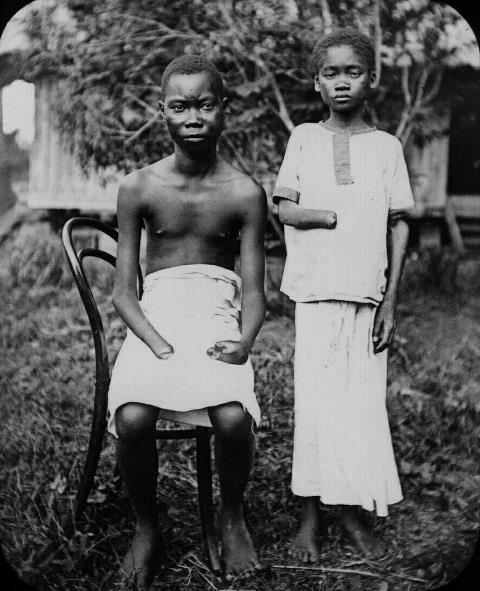Colonialism supported the development of Belgium and the financing of many great public buildings. However, the savagery of Belgian colonialism was as great as the buildings that it financed, and brought great darkness to 2.3 million square kilometers of the Congo in Africa. King Leopold the Second of Belgium said of the Congo: “I do not want to risk losing a fine chance to secure for ourselves a slice of this magnificent African cake” and he set up the International Association of the Congo as a base for establishing a colonial presence.
At this time Europe ruled just 10% of Africa, but the balance of power between the European countries was in danger after Germany caused instability that threatened the colonies and trade routes of Britain, France and Portugal, and so a conference was convened in Berlin on the 15th of November 1884. The resolutions of the Conference of Berlin were Africa’s equivalent of the Sykes-Picot Agreement, and established spheres of influence for the European countries in Africa at the beginning of what is called ‘the scramble for Africa’ that led to the colonization of 90% of Africa. The Berlin Conference and the Scramble for Africa were presented falsely as a great mission to bring civilization to Africa and to rescue Africans from slavery. This humanitarian front to colonialism was similar to what is witnessed today of the occupation and destruction of Muslim countries under the pretext of ‘suppressing terrorism’, and just as the countries converging today on Muslim lands are the real terrorists, so also were the European powers at the Berlin Conference before them enslaving and killing those they claimed to be saving.
The conference gave the huge Congo territory to King Leopold the Second’s International Association of the Congo, which became recognized in 1885 as the Congo Free State by the Belgian parliament. However, the word ‘free’ in Congo Free State was not referring to freedom for Africa; rather it was free-trade for European colonizers in a neutral zone between rival European powers. However, King Leopold was as false as the Berlin Conference and he had paid agents to lobby in both England and Germany for the Congo, and to the English he promised ‘most favored nation’ status and to the Germans he promised that the Congo would remain open to all. To the rest of the world he made himself appear to be a humanitarian benefactor, and thus by deception he was chosen by the Berlin Conference to take the Congo.
The first problem to face King Leopold was Katanga province in the south. The older European powers insisted at the conference upon the principle of rights based upon “effective control”, which meant that whoever claimed a right of possession had also to raise a flag and assert authority on the claimed territories. In order to control Katanga, the colonialists had to deal with a powerful tribal chief called Msiri. Negotiations with Msiri failed, so King Leopold sent Captain W. G. Stairs who raised the flag of Congo Free State and had Msiri killed. The dead chief’s head was cut off, as was the enlightenment custom of the day, and placed on a pole as a lesson to others who refused to negotiate. This was a clear demonstration of “effective control” over Katanga province, which was duly recognized by the British.
Each village was forced to work in harvesting forest rubber. Impossible collection quotas were imposed and failure was punished by death with amputations of hands being required as proof. The system of rule was built upon absolute terror at all levels. The collection of hands became an objective in itself and many rubber collection officers didn’t even bother to count the rubber quotas. Instead they would simply go and cut the hands off as many Africans as they could find until they filled baskets with hands. This continued until half the population was lost, but it was only when King Leopold betrayed the principles of free trade, that the British sent missions to expose the crimes in the Congo Free State, which led to international pressure forcing the Belgian government to take-over the territory from King Leopold in 1908, and restore free trade under the new colonial name of the Belgian Congo.
Despite all this, there is at the entrance to Belgium’s Museum for Central Africa, a giant statue of a European missionary with an African boy clutching his robes, next to a plaque that reads: “Belgium brings civilization to Congo”.
Dr. Abdullah Robin
* Written for Ar-Rayah Newspaper Issue 56

